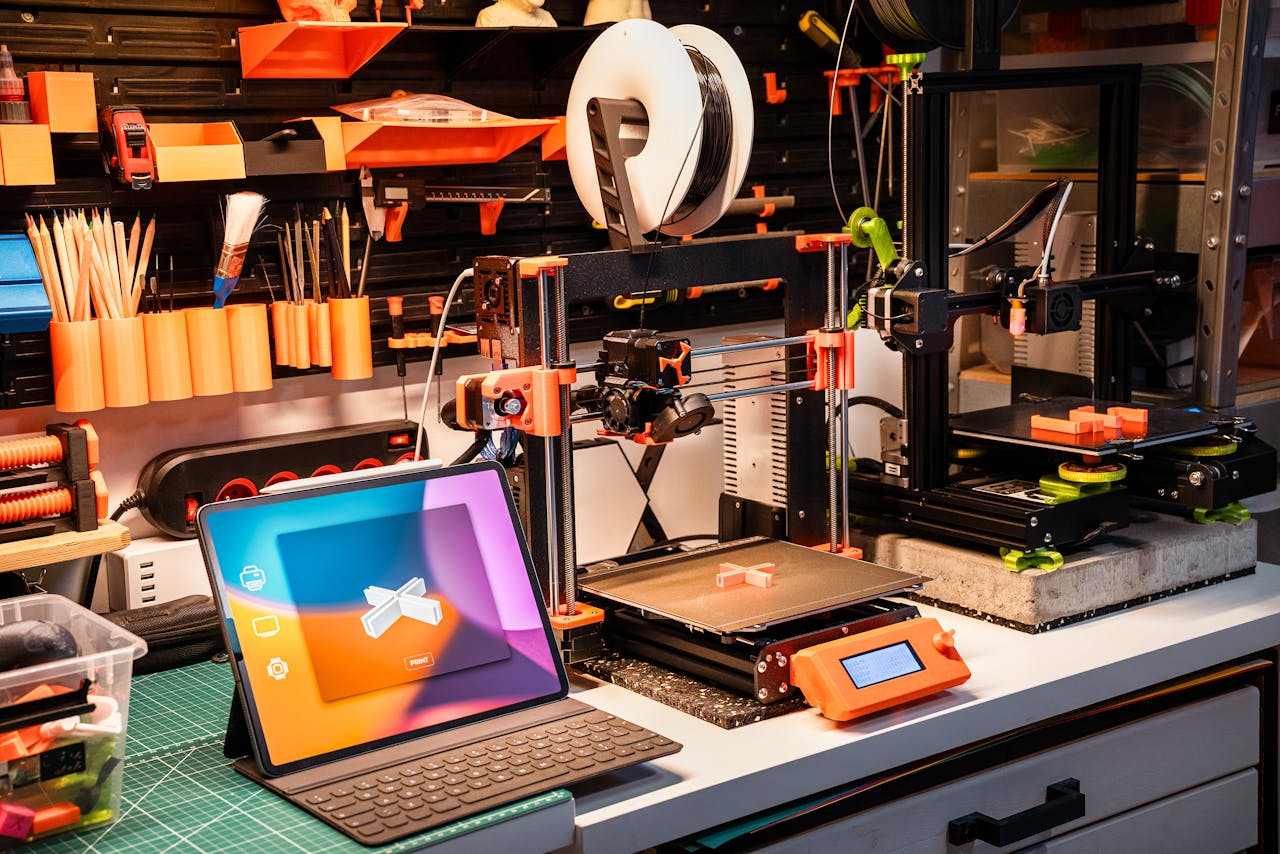3D Printing: The Quietly Growing Hardware Revolution
The Silent Disruptor in Manufacturing
3D printing, better known as additive manufacturing, has quietly revolutionized the way we design, prototype, and manufacture physical objects. Whereas older subtractive manufacturing methods necessarily rely on the removal of material to create a part, 3D printing builds them layer by layer with unprecedented flexibility and speed.
While most people associate 3D printing with hobbyist models or novelty figurines, it has become a core technology for industries ranging from aerospace and automotive to healthcare, construction, and even food production. That is the quiet revolution reshaping how engineers, designers, and innovators approach hardware development by way of enabling previously impossible rapid iteration, customization, and efficiency.
The Evolution of 3D Printing Technology
3D printing developed from experimental prototypes in the 1980s to mainstream industrial applications today.
- 1980s: Chuck Hull invented the first 3D printing technology known as stereolithography. It utilized ultraviolet lasers for curing the liquid resin layer by layer.
- 1990s: SLS and FDM became available, further extending the range of usable materials and access to AM.
- 2000s-Present: While industrial 3D printing upscaled with metals, ceramics, and biocompatible polymers, desktop 3D printers became widely available.
Modern printers are capable of manufacturing functional parts, not just prototypes, which positions additive manufacturing as a valid alternative to traditional production in many industries.
Why 3D Printing Drives the Hardware Revolution
3D printing accelerates innovation by enabling:
- Rapid Prototyping: Engineers can iterate on designs in a matter of hours, not weeks. Automotive engineers, for instance, can print multiple versions of a car component to test for aerodynamics, ergonomics, or assembly fit.
- Customization at Scale: Additive manufacturing allows mass customization. Companies can make tailored medical implants, prosthetics, or consumer products without retooling factories.
- Complex Geometries: 3D printing allows for creating structures that are difficult or impossible with traditional techniques, such as lattice designs in lightweight aerospace parts or biomimetic implants in healthcare.
- Cost Efficiency in Low-Volume Production: Traditional manufacturing of small batches often requires expensive molds or tooling. 3D printing removes these, minimizing upfront costs for startups and innovators.
- Sustainability and Waste Reduction: 3D printing produces significantly less waste, since material is added layer by layer, not subtracted. Indeed, some printers recycle plastic filaments from previous prints, supporting circular manufacturing.
Key Industries Transformed by 3D Printing
- Healthcare and Bioprinting: 3D printing has enabled the manufacture of patient-specific implants, prosthetics, and surgical guides. Bioprinting, which prints cells and tissues, is paving the way for custom organ and tissue development in research labs.
- Aerospace and Automotive: 3D printing of complex, lightweight components is done for aircraft and vehicle parts today to reduce weight and enhance performance. Companies like GE, Airbus, and Tesla leverage additive manufacturing to create fuel nozzles, structural brackets, and interior parts.
- Consumer Products and Wearables: Companies like Adidas and New Balance are 3D printing shoes with custom midsoles that are tailored to the biomechanics of individual runners. Smartwear companies integrate 3D-printed sensors into wearables for wearable electronics prototypes.
- Construction and Architecture: Nowadays, 3D printing produces whole building components or even entire structures. Large-scale concrete printers reduce labor costs, construction time, and material waste.
- Education and Research: 3D printing at universities and laboratories has become a great way to rapidly experiment, teach design thinking, and create low-cost research prototypes. This hands-on approach fosters innovation in engineering and product design programs.
3D Printing Materials and Methods
Common Materials:
- Polymers: PLA, ABS, PETG find extensive use in prototyping and consumer applications.
- Metals: Titanium, aluminum, and stainless steel for aerospace and industrial components.
- Ceramics: Just for applications involving temperature resistance, electrical, or biocompatibility.
- Bio-materials: Cells, hydrogels, and biocompatible polymers for medical research.
Popular Printing Methods:
- Fused Deposition Modelling (FDM): Cost-effective, accessible, suited for rapid prototyping.
- Stereolithography-SLA: This provides high-resolution printing for accurate models.
- Selective Laser Sintering (SLS): Produces strong, functional parts from powder materials.
- Electron Beam Melting (EBM): Used for high-performance metal components.
Challenges to Adopting 3D Printing
Yet despite its potential, 3D printing has some challenges:
- Material Limitations: Additive manufacturing does not apply to all materials.
- Production speed: Even high-volume production is generally slower than that of conventional processes.
- Quality and Standardization: Printer and material variations will affect tolerances.
- Intellectual Property Risks: Digital models can be easily copied without protection.
The Role of 3D Printing in Hardware Innovation
- 3D printing intersects heavily with hardware prototyping.
- Rapid prototyping allows teams to test ergonomics, fit, and assembly before final production.
- Complex parts can be made without expensive tooling to reduce startup costs.
- Hybrid smart prototypes are empowered with integrated electronics, sensors, and IoT devices.
Future Trends in 3D Printing
- Hybrid Manufacturing: A Combination of additive and subtractive approaches for precision and efficiency.
- AI-assisted design: AI algorithms optimize geometry and material usage for stronger, lighter parts.
- Sustainable Materials: Biodegradable or recycled filaments will reduce environmental impact.
- Distributed Manufacturing: 3D printing allows decentralized production that reduces shipping costs and enables local fabrication.
- IoT Integration: Smart 3D printers that monitor quality, progress, and environmental conditions in real time.
The Quiet Hardware Revolution
What started as a tool for niche purposes has turned mainstream, where 3D printing has disrupted the game of innovation, prototyping, and producing hardware. 3D printing quietly drives the next industrial revolution across industries by offering capabilities for rapid iteration, customization, and complex designs. It is a fact that additive manufacturing helps engineers, designers, and innovators lower their costs and waste while simultaneously speeding up the pace of discovery in ways previously unimaginable just a decade ago.
